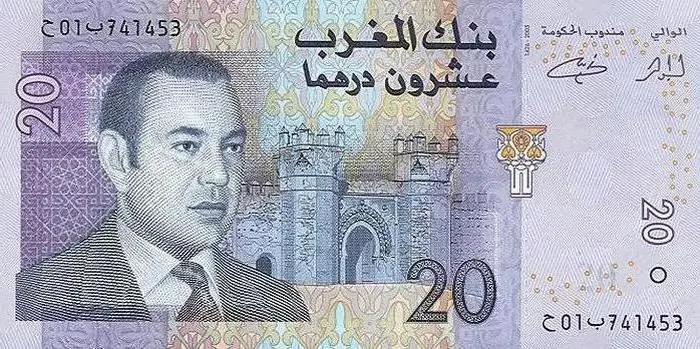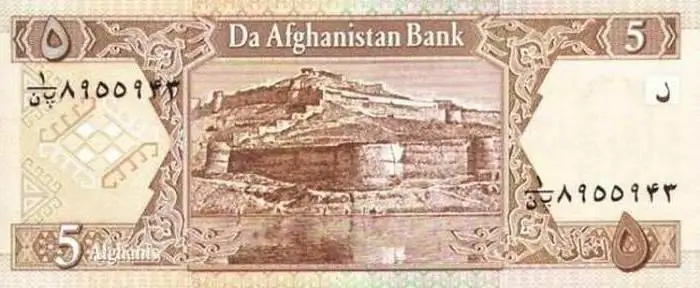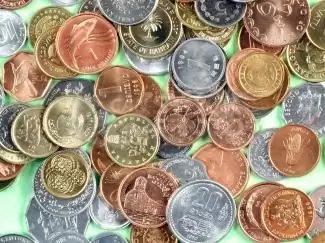2025 Author: Howard Calhoun | [email protected]. Last modified: 2025-06-01 07:12:56
In 2007, in the most mountainous country in the world, a completely unexpected, albeit bloodless, but revolution took place. The Kingdom of Nepal became the Federal People's Democratic Republic. The most surprising thing is that despite such a harsh event (for the first time the Nepalese people were left without a king), new people in power are trying to take care of traditions. One of them is the currency of Nepal, the rupee.
Crushed mohar
Nepal is an ancient country. In any case, although it did not always have independence, it always remained in the sphere of influence of numerous Indian kingdoms. It was possible to slip out of the firm paws of the neighbors in the 12th century, and by the 17th century it was possible to reach dawn. It was then that the Nepalese mohar coin (it is believed that the Nepalese "copied" it from the legendary kingdom of Videha mentioned in the Ramayama epic) also reached its authority.
The first mohars (pronunciation options - "mohur", "moghur") were large coins - works of art made of gold or silver. On European coins, even of the same historical period, theylooked a little.

“Some endless patterns, not a single inscription or number…” - the European will grunt looking at this. In fact, there are numbers and letters here. They are written in the Sanskrit Devanagari script.
But by the way, in that harsh time, the naming was not really needed. The value of a coin was determined by its weight. It was bad with a token coin, and therefore many ancient coins did not survive to us in their entirety. They were ruthlessly cut into pieces by weight, if necessary. But what a pity for such beauty!
As a result, smaller and lighter moharas appeared, and in the end it came down to just copper ones. Yes, both gold and silver were getting smaller and smaller. However, like the state itself. After the lost Anglo-Nepalese war (1814-1816), Nepal is still on the margins of history. And if it were not for the eight-thousanders on its territory, no one would have known the country at all. In general, when in 1932 the already independent Nepal decided to introduce a new currency because of inflation, the old mohar was exchanged for the Nepalese rupee in a ratio of 2 to 1. Moreover, the crushed mohar was emphatically abandoned. After all, the name “mohu” was proposed for the new currency, you know, in memory of what.

Kings and banknotes
The first rupees were exclusively coins. Banknotes appeared for the first time only in 1945. This is how they were printed in India, the Nepalese rupee always looks back at the Indian one. Yes, and India, the only country, due to its geographical location, with which Nepal communicates closely.
Then the style was formedNepalese rupee: no Arabic or Latin numerals - everything is in Devanagari.
In a conspicuous place is always the reigning king. On the obverses of coins and banknotes of the currency of Nepal, you can get acquainted with all the kings of the country since 1945.

The other side of the banknotes showed the uniqueness of the Nepalese fauna. Here we have musk deer, and yaks, and harns (this is such a goat), and sambars (and this is a deer), and buffaloes, and peacocks, and containers (and this is a ram), and rhinos, and tigers, and elephants.
By the way, during this period the country went to the other extreme. If earlier she did without banknotes, now she practically did not use coins. What can you do? Inflation.
…Lost the king
This continued until 2007, when the local parliament, which had accumulated dissatisfaction with the actions (or rather, laziness) of the king, matured the idea of abolishing the monarchy altogether. This was done in January 2008.
And what happened to the rupee, which without a king, like a country without a king, never existed. Nothing, alive, like Nepal. Only on banknotes of the “revolutionary” (although quotes can not be put because rupees are a revolution) series of the king was “erased”, putting in its place the highest mountain in the world, Chomolungma (aka Everest). Because of this, there are still banknotes where the watermark depicting the king is sealed with a red rhododendron. Well, don’t throw away the blanks!

Another revolution was the appearance of… Arabic numerals (!) which duplicate the Devangar ones. The Nepalese gentlemen did not plan to enter the world market,once supplied the currency of Nepal with a "transfer".
The country has long lived without a king. And nothing bad happened. Apparently because on the other side of the paper rupee there is still a rhinoceros, tigers, elephant, yaks, tahrs, with some "newbies" in the form of antelope and barasinga deer.
Denomination
The denomination of the currency of Nepal, one might say, is standard. Let's just say that the rupee is one hundred paise. So, coins: 5, 10, 25, 50 paise and 1, 2, 5 rupees. Banknotes: 5, 10, 20, 50, 100, 500, 1000. The only thing is that now anyone unfamiliar (with what is it?) with Devangari will understand the banknote of what denomination he is holding in his hands, but before that they could well have cheated.
Learning Devanagari
However, just in case, let's introduce you to the Devanagari numbers, and along with other systems.

The first line is Arabic in European script.
Second line - Arabic-Indian.
Third line - Pashtun (Urdu language).
The fourth line is Devanagri.
Fifth line is Tamil.
Devanagari numbers are going to large values like our usual ones. In general, you only need to know four numbers: 0 - and in Devanagari 0, 1 - like our 9, 2 is similar to our deuce, and 5 - to our 4.
That's it, now no one will deceive you!
What's what
Because of the link to the Indian economy and the exchange rate of the rupee legalized at the level of the leadership of the two states: 1 Nepalese is 1.6 Indian. India is pulling out its neighbors. Nepal's money is valued roughly like the currency of a neighboring country.
1 Nepalese cointhe rupee in rubles does not reach the coin of the same denomination of the currency of the Russian Federation: only 58 kopecks. This price has been stable over the last few years. American money for one rupee will give only one cent (the rupee rate to the dollar is 0.0091), and the euro is even less (0.0078).
Here, among the Nepalese themselves, the rupee seems to be turning into a mohar that has been crushed for a long time and has not disappeared only in the collections of numismatists. Indian rupees and US dollars are readily used in the country. Even if government agencies are involved in trade relations.
Here they are so special - the money of Nepal.
Recommended:
The currency of Mauritius is the Mauritian rupee: description, denominations, exchange rate

The word "rupee" comes from Sanskrit and translates as "chased silver". This is the name of the currencies of several countries that were once colonies of Great Britain or Holland. The currency of Mauritius is no exception. For those wishing to visit this small island nation, it is useful to know the features of its currency
The official currency of Morocco. Country currency. Its origin and appearance

The official currency of Morocco. Country currency. Its origin and appearance. Where and how to change currency. Moroccan dirham to US dollar exchange rate
PJSC "Taganrog Aviation Scientific and Technical Complex named after G. M. Beriev" (TANTK named after Beriev): description and reviews

TANTK im. Berieva is one of the oldest design bureaus in Russia with unique experience in the design and production of amphibious aircraft. Over the history of the company's activities, aircraft have been created that have become legendary. Today, the design bureau continues to work, producing products in demand for domestic and foreign markets
The currency of Afghanistan: the history of the currency. Curious information about the currency

Afghan currency Afghani has almost a century of history, which will be discussed in this material
What is a currency? Russian currency. Dollar currency

What is the state currency? What does currency turnover mean? What needs to be done to make the Russian currency freely convertible? What currencies are classified as world currencies? Why do I need a currency converter and where can I find it? We answer these and other questions in the article

